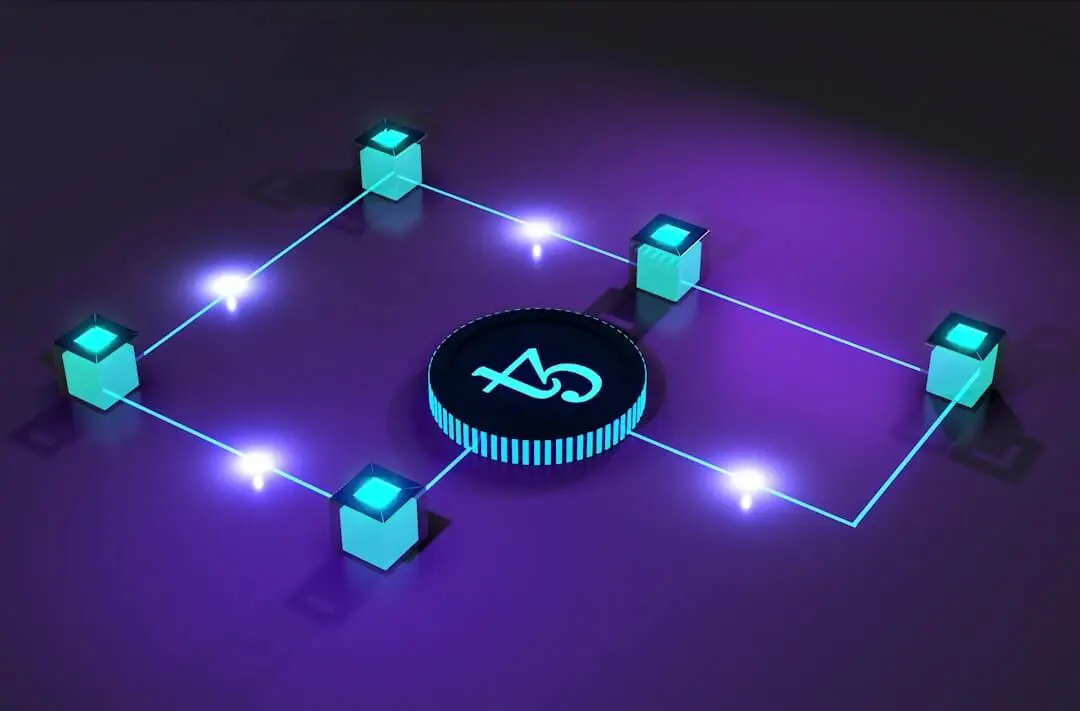Table of Contents
Welcome to the fascinating world of blockchain nodes! If you’ve ever been curious about the backbone of cryptocurrency networks, you’re in the right place. At its core, a blockchain network relies on various nodes to function smoothly. But what exactly are these nodes, and why are they important? Imagine nodes as the individual computers or devices that work together to maintain a distributed ledger. Their main tasks involve verifying transactions, securing the network, and ensuring everything is running like a well-oiled machine. Whether it’s adding new blocks of data or keeping an eye out for potential fraud, nodes play a crucial role in keeping things honest and decentralized.
Understanding Blockchain Networks
Blockchain networks have become quite the buzzword lately, especially with the rise of cryptocurrencies like Bitcoin and Ethereum. But what exactly are these networks, and how do they work? Let’s break it down and get a better understanding.
Definition of Blockchain Networks
At their core, blockchain networks are digital ledgers spread across a series of computers, often referred to as nodes, which make records of all transactions in a secure, transparent, and tamper-proof manner. Unlike traditional databases that rely on a central authority to validate transactions, blockchain networks operate in a decentralized fashion. This means no single entity controls the data, making them revolutionary in ensuring data fidelity and security.
A blockchain network can be thought of as a network of interconnected “blocks” that store bundles of transactions. Each block contains a cryptographic “hash” of the previous block, linking them in a chronological chain. This structure ensures that once a block has been added to the chain, it is nearly impossible to alter without changing every subsequent block, solidifying the data’s integrity.
Key Components of a Blockchain Network
To truly understand how blockchain networks function, it’s essential to recognize their critical components:
– Blocks: These are digital containers that hold transaction data. Each block references the previous one, creating an immutable chain.
– Nodes: Varied computer systems within the network that store, verify, and share transaction information.
– Cryptographic Hashes: Unique identifiers for blocks that ensure the immutability of the data and protect the ledger from tampering.
– Consensus Mechanisms: Protocols that help nodes agree on the validity of transactions. Common mechanisms include Proof of Work (PoW) and Proof of Stake (PoS).
Role of Nodes in Blockchain Networks
Nodes are the backbone of a blockchain network. They are essential players that make sure transactions are verified and data integrity is maintained throughout the entire network. Without nodes, the decentralized nature of blockchain would crumble.
Here’s how nodes function in a blockchain network:
– Verification: Nodes verify each transaction, ensuring they follow the network’s rules. This helps prevent double spending and fraudulent activities.
– Record Keeping: They keep a copy of the entire blockchain history, enabling transparency and allowing easy access to transaction data.
– Consensus Participation: Nodes often play a pivotal role in reaching consensus, helping determine which transactions are added to the blockchain.
Their distributed nature means nodes are spread across the globe, working together to maintain the accuracy and security of the blockchain without the need for a central authority.
Types of Blockchain Nodes
Not all blockchain nodes are the same, and they can have different roles and functionalities within the network. Let’s explore the various types of blockchain nodes and how each functions to sustain the blockchain ecosystem.
Full Nodes
Full nodes are the guardians of the blockchain, as they own the sacred duty of maintaining the complete copy of the blockchain ledger. These nodes hold every transaction ever processed on the network since its inception. By doing so, they provide the highest level of security and transparency. Features of full nodes include:
– Blockchain Integrity: They validate transactions and blocks against the established protocol rules, ensuring the network’s integrity.
– Network Support: Full nodes communicate with other nodes, helping propagate verified transactions and new blocks throughout the network.
– Autonomy: They can operate independently, verifying transactions and blocks without relying on external sources.
Full nodes can be resource-intensive to operate since they require significant storage capacity and computational power. Still, they’re crucial in maintaining a robust and decentralized blockchain network.
Lightweight Nodes
Lightweight nodes, also known as light nodes or SPV (Simplified Payment Verification) nodes, are the more efficient siblings of full nodes. They don’t store the entire blockchain; rather, they keep only a small portion of it. Here’s what makes them special:
– Efficiency: Since they store just the block headers instead of full blocks, lightweight nodes require considerably less storage space and computational power.
– Quick Verification: They rely on full nodes to download and verify transactions quickly without needing to process every single one.
– Mobile Suitability: Their lesser resource demand makes them ideal for mobile devices and systems where storage and power are limited.
While lightweight nodes don’t provide the same level of security as full nodes, they offer a quicker and more convenient way for users to interact with the blockchain.
Mining Nodes
Mining nodes are the network’s powerhouse. They are responsible for adding new blocks to the blockchain and are a vital component in mining-based consensus mechanisms like Proof of Work. Mining nodes undertake the following:
– Transaction Validation: They gather unconfirmed transactions into a candidate block for verification.
– Block Generation: By solving complex cryptographic puzzles, they generate new blocks and earn rewards, usually in the form of cryptocurrency.
– Network Support: Mining nodes work to keep the network secure by constantly participating in the consensus process.
Ultimately, mining nodes require significant computational power to perform their tasks, which is why they often utilize specialized hardware. Despite their resource demands, these nodes are critical in protecting the blockchain network from attacks and ensuring its continuity.
Understanding blockchain and its different types of nodes is key to mastering the wonders of decentralized technologies. Whether you’re a tech enthusiast or a curious newcomer, recognizing the role and function of nodes within the blockchain ecosystem can open up a world of exciting possibilities.
How Blockchain Nodes Work
Blockchain technology might sound like something out of a sci-fi movie, but it’s grounded in a way that’s both fascinating and accessible. At the heart of this technology are blockchain nodes, the unsung heroes that keep everything running smoothly. So, how exactly do these nodes work?
Node Communication and Data Exchange
Imagine a bustling network of nodes working together like busy bees in a hive. Each node in a blockchain network plays a vital role by communicating and sharing data with one another. This communication is vital for maintaining the decentralized nature of the network. When you make a transaction, whether it’s buying cryptocurrency or transferring tokens, that transaction is broadcasted to all nodes within the network.
Nodes operate on a peer-to-peer model, which means there isn’t a central node calling the shots. Instead, information jumps from one node to another, like a game of telephone—though, much more reliable! Each node listens for the latest data, updating its own copy of the blockchain as needed. These updates ensure that all nodes carry the same information, achieving a much-needed synchronicity within the blockchain universe.
Consensus Mechanisms
Now, let’s chat about consensus mechanisms—think of them as the ultimate decision-making process in the blockchain world. Since there’s no central authority, blockchain nodes must reach consensus about the state of the blockchain. It’s like a democracy where each node gets a say.
Different blockchains use varying consensus mechanisms to agree on which transactions should be added to the blockchain. The most famous is Proof of Work (PoW), used by Bitcoin, where nodes (also called miners) solve complex mathematical puzzles to validate transactions. There’s also Proof of Stake (PoS), which selects validators based on their stake in the network.
No matter which consensus mechanism is used, the goal remains the same: ensure all nodes agree on the network’s history and current state, keeping everything aligned and trustworthy.
Security and Validation Responsibilities
Security is the name of the game for blockchain nodes. Each node has the responsibility to verify transactions and maintain a secure network. This involves multiple tasks, starting with validating that a transaction is legitimate according to the network’s rules. For instance, nodes check whether the sender has sufficient funds before processing a transaction.
But it’s not just about approving transactions; nodes are also tasked with safeguarding the network from malicious attacks, like double spending attempts where someone tries to spend the same cryptocurrency twice. They do this with cryptographic algorithms and a keen eye for consistency and authenticity.
In essence, the security responsibilities of nodes ensure that your data—and the data of the entire network—remains tamper-proof and accurate. By validating every block of data, nodes help keep everything above-board, maintaining trust in this decentralized ledger system.
Importance of Nodes in Cryptocurrency Ecosystems
Now that we know a bit more about how blockchain nodes work, let’s delve into their importance, especially in cryptocurrency ecosystems. Nodes are the backbone of any blockchain network. Without them, all those exciting stories about cryptocurrency would be just that—stories, without any real-world application!
Here’s why nodes are so crucial:
– Decentralization: Nodes are the reason blockchain technology is decentralized. They ensure that power and control don’t lie with a single entity, which is a considerable advantage over traditional financial systems. In decentralized networks, everyone agrees, nobody rules alone.
– Network Resilience: Nodes contribute to the robustness and resilience of the network. Since data is replicated across thousands of nodes, knocking out a single node doesn’t crumble the network. This resilience keeps systems like Bitcoin and Ethereum online around the clock, no matter what’s happening in the digital space.
– Transparency and Accessibility: Each node maintains a copy of the blockchain, which adds transparency and openness. This means anyone, anywhere, with the right knowledge can access and verify data independently—talk about empowerment!
– Facilitating Transactions: Nodes are essential for processing transactions and adding new blocks to the blockchain. Every time you send or receive cryptocurrencies, it’s the nodes doing the heavy lifting, making sure everything gets processed quickly and efficiently.
In the fast-evolving world of cryptocurrency, nodes stand as the cornerstone that enables innovation and trust. Whether you’re a casual enthusiast or part of the tech-savvy crowd, understanding these nodes unveils the marvel of blockchain networks. So, next time you dive into the world of cryptocurrencies, give a little nod to the nodes—they’re working tirelessly to make the magic happen!
Conclusion
Understanding blockchain nodes is like peering into the heart of the decentralized network universe. These nodes not only store data but also help validate and secure transactions, making sure everything on the blockchain is safe and trustworthy. By working together, they maintain a system that is transparent, reliable, and almost impossible to tamper with. So next time you hear about blockchain technology, you’ll know the nodes are its unsung heroes, keeping everything running smoothly and efficiently.





